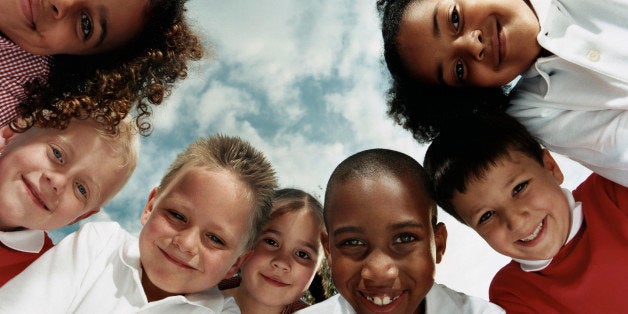
Once upon a time, there was a girl named Kechelle who was raised by her aunt and uncle in the Anacostia neighborhood of Washington D.C. Kechelle was smart as a whip but withdrawn in class and she struggled at a school that felt chaotic and overwhelming. The school she attended was Savoy Elementary, which was, for many years, one of the lowest-performing schools in the District.
One day, when Kechelle was in third grade, a new principal began investing in an arts program at her school. He filled the halls with color and life and hired artists to teach dance and music every morning. Something within Kechelle awakened. She began to look forward to going to school. She auditioned for a new performing group, which required good grades and school attendance to participate, and began rehearsing after school and on weekends. In just one year, Kechelle was transformed; she was engaged in school and talkative in all her classes. To see her perform is to witness a young person who has claimed her place in the world and who will never let anyone silence her again.
The End?
No. Our tale does not end there, because this story is not hers alone. This is also the story of Kechelle's school and others like it. Savoy is a place where educators are using the arts as a tool to help turnaround low-performing schools and improve outcomes for all students - not just the stars who light up the stage.
For the last decade, we have been engaged in a national conversation about how to fix our failing schools. We've heard again and again of schools that grapple with low test scores, toxic school climate, chronic student behavior problems, discouraged parents and teachers and disengaged students.
When Kechelle started at Savoy, less than 20 percent of its fifth graders were reading at grade level, and the school was in the bottom five percent of all D.C. schools. But in 2011 the District brought in a new principal, Patrick Pope, and received a School Improvement Grant from the U.S. Department of Education. Later that year, Savoy became part of a group of schools participating in Turnaround Arts, a program that helps low-performing schools use the arts as part of a comprehensive school reform effort. Turnaround Arts was started by the President's Committee on the Arts and the Humanities, a White House advisory committee of which I am a member. I began working with Savoy that year.
In addition to Savoy's own arts and music teachers, Principal Pope used federal and district funds to bring in an arts coordinator, part-time teaching artists, and partnerships with local cultural organizations. Parents and teachers transformed the building itself -- putting bright colors and banners throughout the halls. Math, reading and social studies teachers began incorporating music, visual arts and theater into their lesson plans. All Savoy students started participating in school-wide performances, for audiences packed with families and community members. And now, two years in, the school feels transformed, with students, teachers and parents happier, math and reading scores rising significantly, attendance up by a wide margin and student suspensions decreasing by almost 70 percent.
This is not a fairytale, these are the facts.
We have seen these results replicated in our Turnaround Arts schools across the country -- from a Native American reservation in Montana to the Irish Chanel in New Orleans, educators have been successfully using the arts to move the needle on student outcomes in some of the toughest schools in our country. Decades of research show that, used strategically, the arts are an effective tool for improving school culture and climate, increasing student engagement and building parent and community involvement. Yet, music, theater and other arts programs have been disappearing from public schools, often the first victims of budget cuts. According to the U.S. Department of Education, almost 6 million elementary students - overwhelmingly in our highest poverty schools- have no art or music classes. Far too often, the schools that need the arts the most are getting them the least.
The arts should be part of the equation in every school. Not just because of students like Kechelle who shine on a stage, nor because of students like myself who discover a desire to become lifelong artists. No, arts education must be part of our education solution because it works for all students.
The arts are not the whole solution. We need strong leadership, effective teachers and hard work on many fronts. But arts education gives our schools effective tools to reach and teach students. And for every Kechelle that our program touches, there are thousands more in failing schools who need these tools so that they too can shine, not only on stage but in the classroom and in life. That's a fairy tale ending we should all believe in.